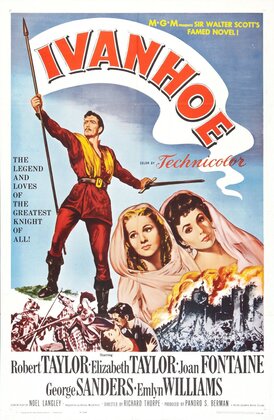Further Reading
American Literary History 22:4 (2010), special issue on “Medieval America”. David Butler, dir. Leave it to Beaver, season 3 episode 36, “Beaver and Ivanhoe”. Charles W. Chesnutt, The House Behind the Cedars, 1900. Astrid Erll and Ann Rigney, eds., Mediation, Remediation, and the Dynamics of Cultural Memory. Scott Horton, “How Walter Scott Started the American Civil War,” Harper’s Magazine, July 2007. Lisa Lampert-Weissig, Medieval Literature and Postcolonial Studies. Billie Melman, “Claiming the Nation’s Past: The Invention of an Anglo-Saxon Tradition,” Journal of Contemporary History 26 (1991): 575-595. Joanne Parker, “Anglo-Saxonism and the Victorian Novel,” in: The Oxford Handbook of Victorian Medievalism, 632-653. Anne Helen Peterson, “The Problems Solved By Debutantes”. Ann Rigney, The Afterlives of Walter Scott: Memory on the Move (Oxford: Oxford University Press, 2012). Sir Walter Scott, Ivanhoe. Walter Srebnick, “Re-presenting History: Ivanhoe on the Screen,” Film & History 29 (1999): 46-54. Mark Twain, Life on the Mississippi, 1883. Matthew X. Vernon, The Black Middle Ages: Race and the Construction of the Middle Ages (New York, NY: Palgrave, 2018.) James Watt, “Sir Walter Scott and the Medievalist Novel,” in The Oxford Handbook of Victorian Medievalism, 162-174 Related Content Ivanhoe and the Invention of Merry England Music: "Evening Melodrama" by Kevin Macleod (www.incompetech.com)
0 Comments
Leave a Reply. |
Site Map |
© 2013-2024 Footnoting History. All rights reserved.
Footnoting History and the Footnoting History logo
are trademarks of Footnoting History, NY. Footnoting History operates under a SAG-AFTRA Micro-Monetized Podcast Agreement. |



